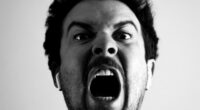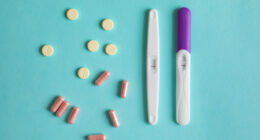Wheat bran is derived from the outer layer of the wheat grain and has a slightly higher calorie count compared to oat bran. Oat bran comes from the outer husk of oats and is known for its cholesterol-lowering properties. It contains a soluble fiber called beta-glucan that can help reduce LDL (bad) cholesterol levels in the blood.
What is wheat bran?

Wheat bran, as the name suggests, is derived from wheat. It is the outer layer of the wheat kernel that remains after the grain has been processed into flour. This means that it contains a multitude of nutrients and dietary fiber, making it a great addition to your diet.
One of the key components of wheat bran is fiber. Fiber plays an essential role in maintaining digestive health by promoting regular bowel movements and preventing constipation. Additionally, fiber can help lower cholesterol levels and regulate blood sugar levels.
In addition to fiber, wheat bran also contains vitamins such as B vitamins (including niacin, thiamin, and folate), minerals like iron and magnesium, and antioxidants. These nutrients work together to support various aspects of your overall health – from boosting energy levels to strengthening your immune system.
What is oat bran?

Oat bran is the outer layer of the oat groat, which is the whole grain kernel. It contains a high concentration of fiber and nutrients. Oats are considered one of the healthiest grains available, and oat bran takes it a step further by providing even more nutritional benefits.
Oat bran has a slightly nutty flavor and a soft texture that makes it versatile for various culinary uses. It can be added to baked goods like muffins or breads to increase their fiber content. It can also be used as a topping for yogurt or cereal to add crunch and additional nutrients.
Oat bran is also rich in essential minerals such as magnesium, phosphorus, zinc, and iron. These minerals play crucial roles in maintaining overall health and promoting proper bodily functions.
Wheat bran Vs. Oat bran – Key differences
- Wheat Bran: Wheat bran is derived from the outer layer of the wheat grain, specifically the hard outer shell or husk.
- Oat Bran: Oat bran comes from the outer layer of the oat grain, which includes the bran and germ.
Nutrient Composition:
- Wheat Bran: Wheat bran is rich in dietary fiber, particularly insoluble fiber. It is a good source of minerals such as manganese, phosphorus, and magnesium. It also contains small amounts of vitamins, including B vitamins.
- Oat Bran: Oat bran is higher in soluble fiber compared to wheat bran. It is particularly rich in a specific type of soluble fiber called beta-glucan, which is known for its cholesterol-lowering properties. Oat bran also contains B vitamins, minerals like magnesium and phosphorus, and some protein.
Flavor and Texture:
- Wheat Bran: Wheat bran has a nutty and slightly bitter flavor. It has a coarser texture and can be a bit grainy when consumed on its own.
- Oat Bran: Oat bran has a milder, sweeter flavor compared to wheat bran. It has a finer texture and can be smoother when cooked.
Culinary Uses:
- Wheat Bran: Wheat bran is commonly used as an ingredient in baked goods like bread, muffins, and cereals. It can add texture and increase the fiber content of recipes.
- Oat Bran: Oat bran is often used in a similar manner to wheat bran, added to baked goods like bread, muffins, and pancakes. It can also be used as a hot cereal by cooking it with water or milk.
Health Benefits:
- Wheat Bran: Wheat bran’s high fiber content promotes digestive health by supporting regular bowel movements and preventing constipation. It may also help regulate blood sugar levels and contribute to a feeling of fullness, which can aid in weight management.
- Oat Bran: Oat bran’s soluble fiber, especially beta-glucan, has been linked to various health benefits. It can help lower cholesterol levels, reduce the risk of heart disease, and support healthy blood sugar control. Oat bran’s fiber content also promotes digestive health.
Health benefits of wheat bran and oat bran
| Health Benefit | Wheat Bran and Oat Bran |
|---|---|
| Fiber Content | High in dietary fiber, promotes regular bowel movements, aids in digestion |
| Cholesterol-Lowering | May help lower LDL (bad) cholesterol levels, rich in beta-glucan (oat bran) |
| Heart Health | Fiber content may support heart health by regulating blood pressure and cholesterol |
| Weight Management | Fiber provides a feeling of fullness, aids in weight management |
| Digestive Health | Promotes regular bowel movements, reduces the risk of constipation |
| Nutritional Value | Good source of minerals (manganese, phosphorus, magnesium), B vitamins |
| Blood Sugar Control | May help regulate blood sugar levels, beta-glucan (oat bran) |
Image Credits
Featured Image By – Markus Spiske on Unsplash
Image 1 By – Utsman Media on Unsplash
Image 2 By – makvar-face0 from Pixabay








